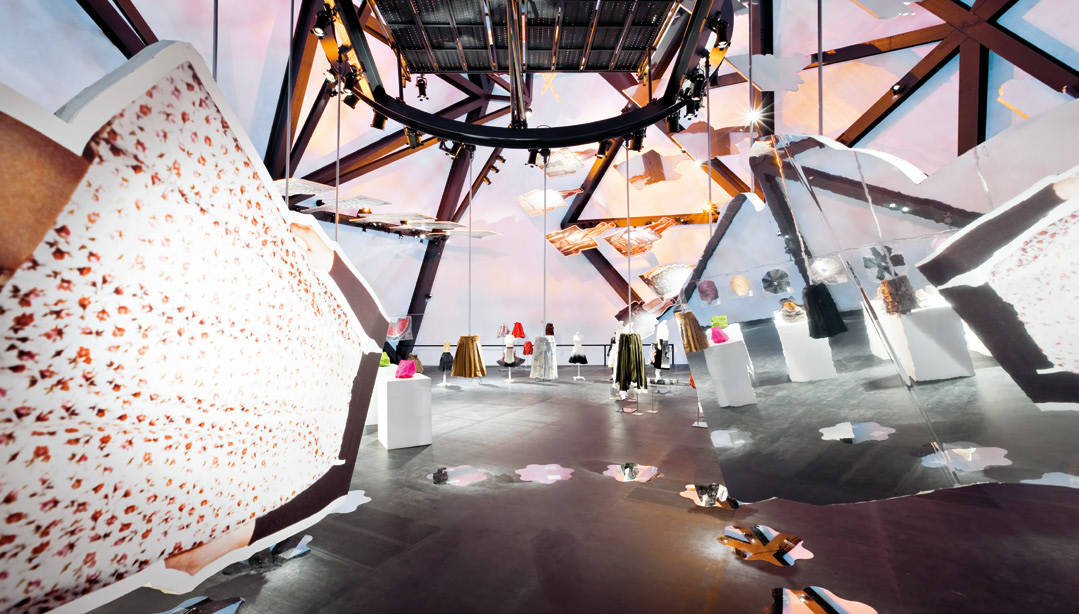architect: AMO*OMA
location: Seoul, South Korea
The form of the Transformer is derived from a Tetrahedron and when rotated each side facilitates a different program. The programs envisioned include the Prada Waist down Exhibition, an art exhibit by a world renowned artist and a movie festival. The final closing event of the pavilion will entail a Prada fashion show for 500 guests. In order to accommodate a range of different fashion, art and movie events in 2009, cranes will rotate, and then flip the pavilion into 4 different façade and floor plate configurations. Each of the four programs will function on unique steel framed shapes including a hexagon, a cross, a rectangle and a circle. Thus, over the course of the exposition, floors will become walls and walls will become ceiling.

The structure will be wrapped in a translucent membrane as well as incorporate an LED display which will show movies of transformation and advertisements. The Transformer is located adjacent to the traditional 16th Century Kyounghee Palace and adds a modern element to the historical context.
project: Asian Pavilion for Prada
location: Seoul, South Korea
team partners: Rem Koolhaas, Ellen van Loon
associates: Kunle Adeyemi, Kees van Casteren, Chris van Duijn
design architect: Alexander Reichert
collaborators: Hyoeun Kim, Ye Rin Kang, Vincent Mc Ilduff, David Moon, Mariano Sagasta, Claudia Romao, Eva Dietrich, Alex de Jong, Wayne Congar, Miguel Huelga de la Fuente, Gustavo Paternina-Soberon, Nam Joo Kim
concept design: 2008
completion: April 2009
photo by Sergio Pirrone
In the late nineties, while working on the design for the new headquarters for Universal (currently Vivendi), OMA was first exposed to the full pace of change that engulfed the world of media and with it the increasing importance of the virtual domain. It led Rem Koolhaas and the Office for Metropolitan Architecture (OMA) to create a new company, AMO, exclusively dedicated to the investigation and performance in this realm. While OMA remains dedicated to the realization of architectural projects, AMO applies architectural thinking in its pure form to questions of organization, identity, culture and program, and define ways - from the conceptual to the operative - to address the full potential of the contemporary condition. AMO is now a research office that embodies both the professional experience of OMA and knowledge generated by the Harvard Design School Project on the City. Supervised by Rem Koolhaas and Reinier de Graaf and with a core staff based in Rotterdam, New York and Cambridge, Massachusetts, AMO has consolidated a series of existing and new professional collaborations and cross-disciplinary partnerships. AMO’s work is to develop new models of thinking about systems and to create clearly considered blueprints for change.




















